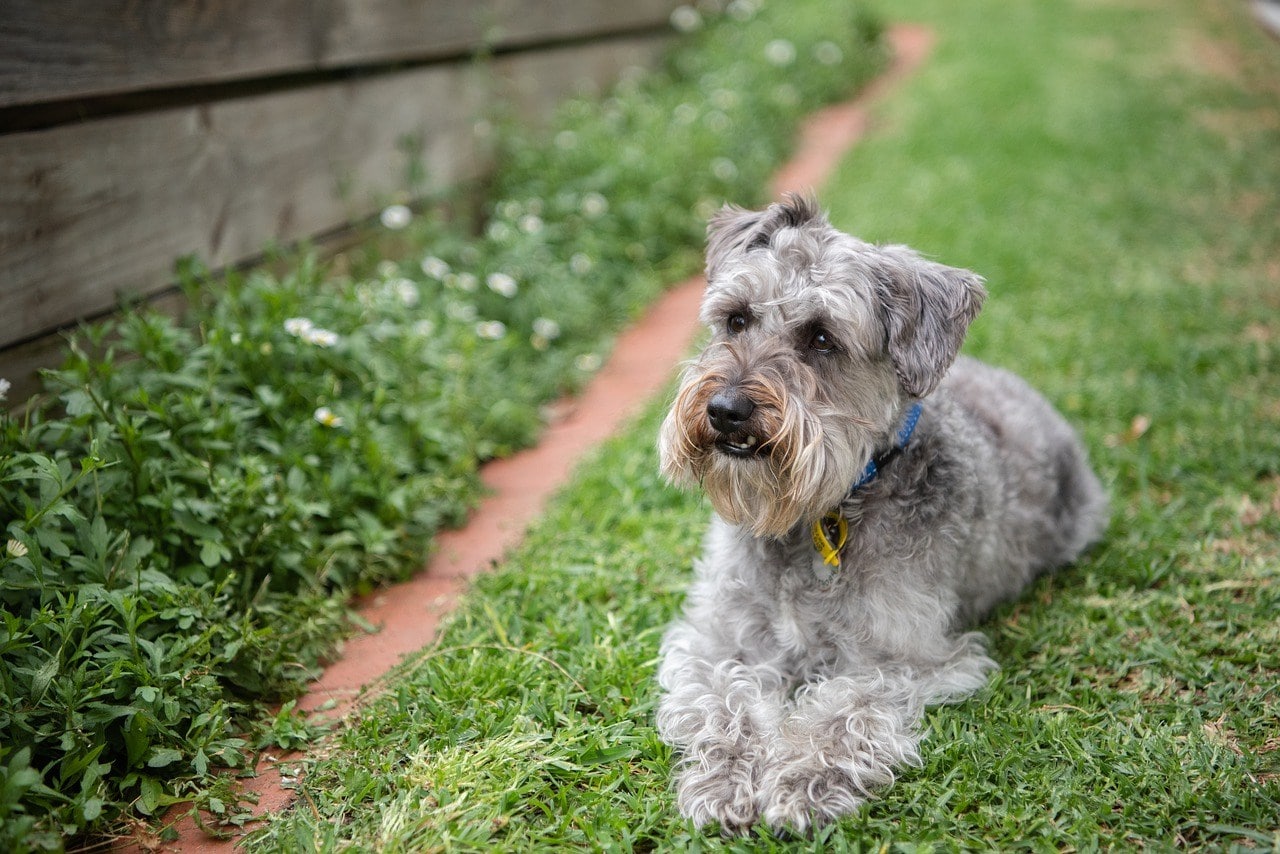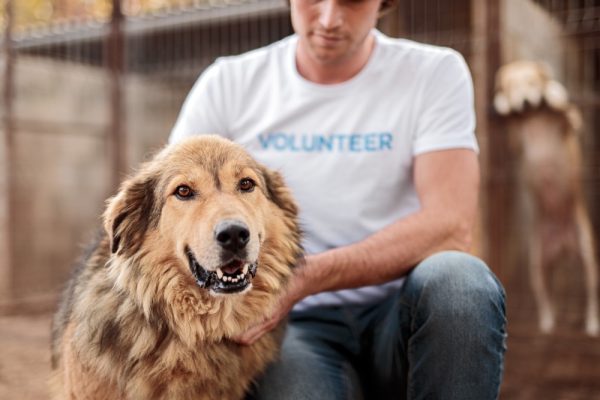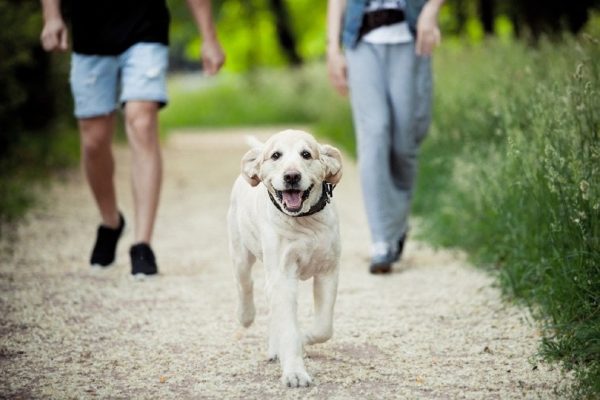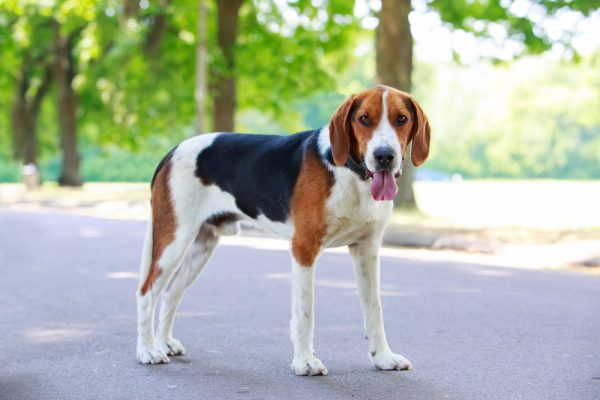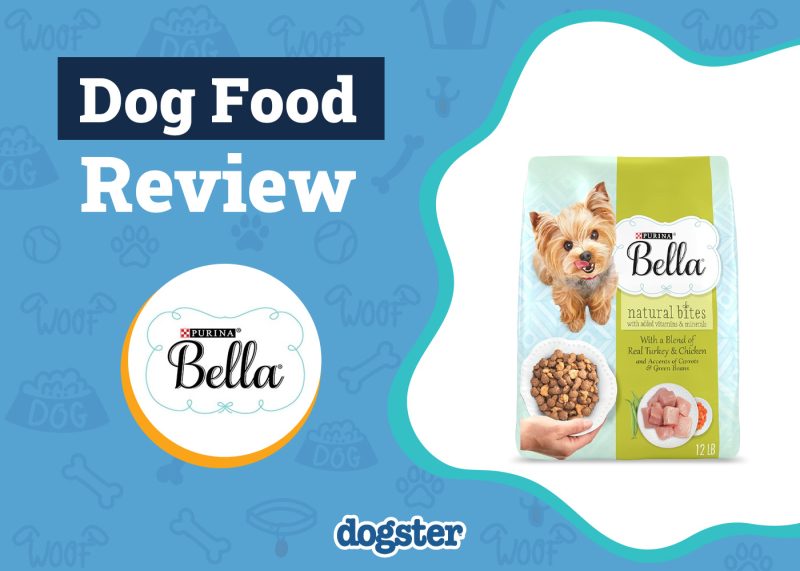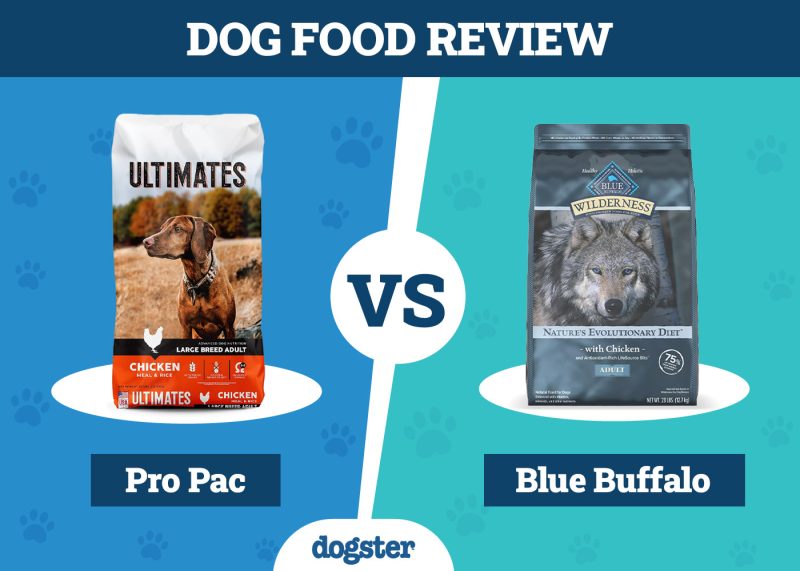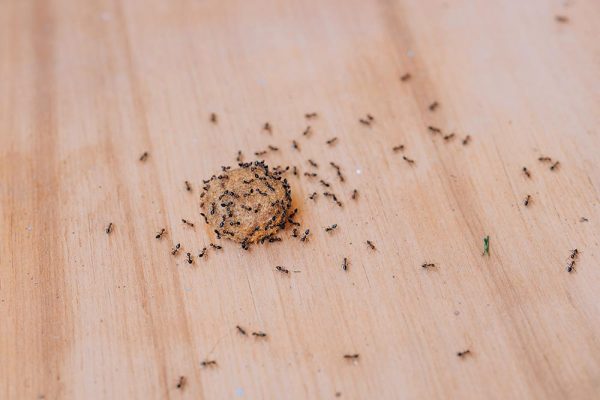In this article
View 4 More +The adorable Schnoodle is an amazing dog to bring into your home. This crossbreed of the Miniature Schnauzer and Toy Poodle is best known for their non-shedding coat, intelligence, and loving personality. While they aren’t large dogs, the costs associated with them can be.
Due to the popularity of this breed, they can be extremely hard to find. Depending on where you find your Schnoodle, you can easily pay up to $2,000 or more to acquire them. Let’s learn more about the costs associated with these little dogs so you can better understand what to expect.

Bringing Home a New Schnoodle: One-Time Costs
As with any breed, the biggest expense when it comes to a Schnoodle is the one-time rescue, adoption, or breeder costs. For one of these dogs, you can look to pay anywhere from $500 to $2,000. Of course, the price of the pup itself isn’t the only cost you should expect. You’ll need to purchase your pup’s bedding, leash, collar, food, bowls, toys, and other necessary items. Your new pup should also be taken to the veterinarian shortly after coming home to ensure they are in good health and to get started on all those important vaccinations.1
Let’s take a more in-depth look at some of these costs so you can know what to expect when bringing a new Schnoodle into your home.
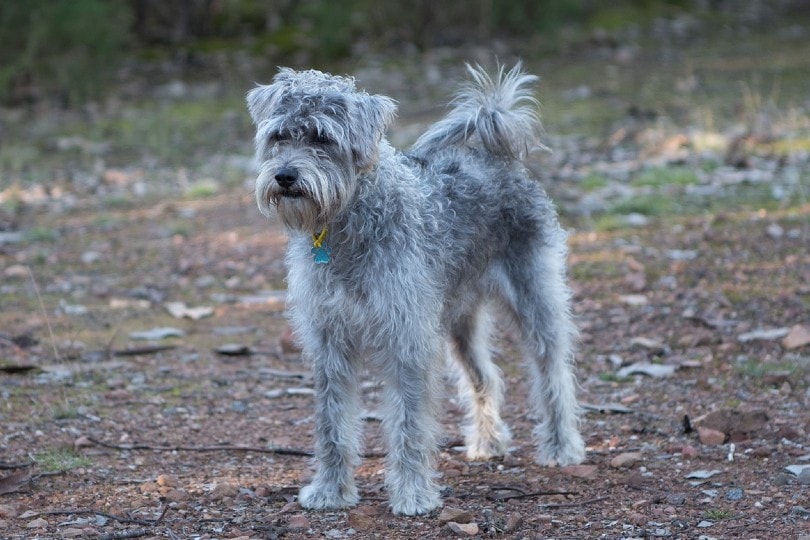
Free
Finding a friend or loved one who has a Schnoodle that they are willing to give you is unlikely. They could be missing out on quite a bit of money by doing you such a huge favor. However, if by some miracle, you do find yourself in a situation where someone is offering you a Schnoodle for free, you should still ask lots of questions to ensure that there is nothing wrong with the pup and that things are on the up and up.
Adoption
- $50–$500
Adopting a pet is a great way to make a difference in an animal’s life. You can visit your local animal shelter or rescues in your area to get this process started. The only issue with getting a dog at a shelter or rescue is that you can’t always get the exact breed you want. If nothing but a Schnoodle will do, you’ll need to contact lots of places in hopes of finding one. Then, depending on where you find the dog of your dreams, you can easily expect to pay anywhere from $50 to $500 in adoption fees.
Another thing that’s beneficial about finding a Schnoodle at a rescue or shelter is everything your adoption fee covers. In most situations, these fees include spaying or neutering, deworming, health checks, first vaccinations, ID tags, and in some cases, flea prevention or treatment.
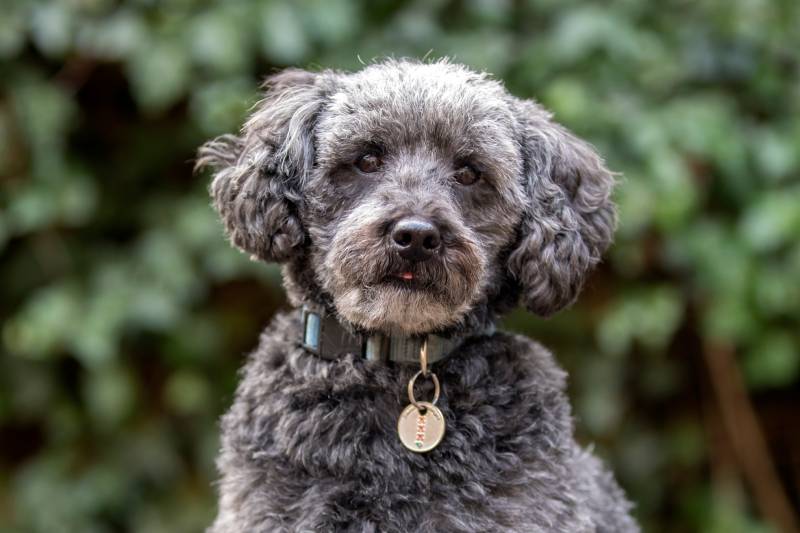
Breeder
- $500–$2,000+
When it comes to a Schnoodle, purchasing one of these dogs from a breeder is usually the highest one-time cost you’ll experience. The breeder’s reputation and the quality of the dog’s breeding stock are why prices are so high. Reputable breeders can tell you everything about the dogs in their care, their lineage, and the potential for any future issues. You’ll also typically find that you pay for several benefits when using a breeder.
- Tests that prove the health of the breeding stock
- Deworming
- First vaccinations
- Health certificate
- Microchipping
- Collar and harness
- Puppy food to take home
When you reach out to breeders in your area, you must choose one with a good reputation. Reputable breeders work diligently to keep their dogs happy and healthy. You’ll also find that they have contracts, rules, and guidelines that keep their dogs protected, even once they are sold.
Initial Setup and Supplies
- $300–$500
Initial setup and supplies are the things every puppy needs to be happy, comfortable, and safe when you bring them home. This can include items such as a dog bed, toys, and bowls. It doesn’t end there, however. You also want to ensure that your puppy gets tags, microchipping, and veterinarian care early, so they start their new lives out safe and healthy.

List of Schnoodle Care Supplies and Costs
| ID Tag and Collar | $15 |
| Spay/Neuter | $150–$300 |
| X-ray Cost | $100–$250 |
| Ultrasound Cost | $250–$500 |
| Microchip | $45–$55 |
| Teeth Cleaning | $150–$300 |
| Bed | $30 |
| Nail Clipper (optional) | $10 |
| Brush (optional) | $10 |
| Toys | $30–$40 |
| Carrier | $40–$80 |
| Food and Water Bowls | $10–$20 |
How Much Does a Schnoodle Cost Per Month?
- $150–$500
It’s difficult to determine exactly how much a Schnoodle or any dog costs per month. A lot of it depends on the lifestyle you want for your dog. You’ll, of course, be spending money on food, treats, veterinarian visits when needed, trips to the groomer, toys, and flea and tick prevention. Added expenses you may not think about can include training classes, pet insurance, and extended medical care if your pet has a condition or illness.
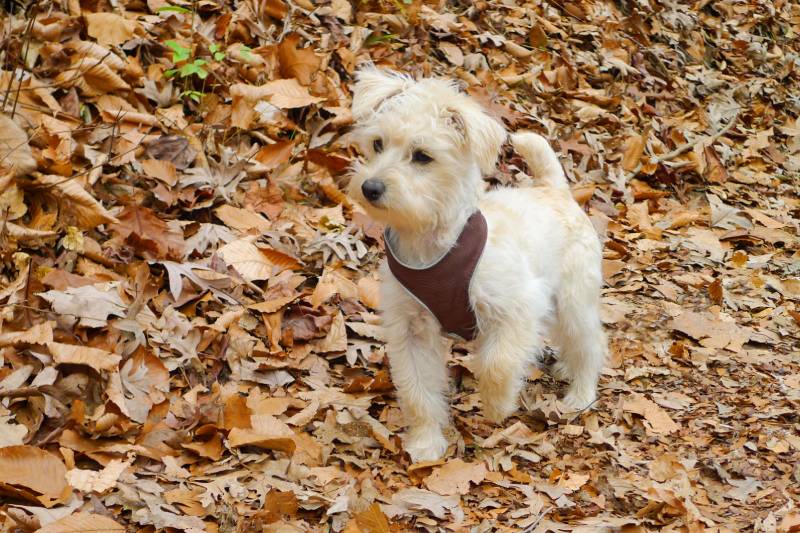
Health Care
- $50–$200
Health care is important for any pet. A trip to the veterinarian can easily cost anywhere from $50 to $200 depending on what is being done. Luckily, if your dog is healthy, veterinarian trips are usually scheduled every 6 months to a year once your dog has had all their initial vaccines and checks. If your dog has illnesses that require medical care, you may also find yourself paying for medications to help treat them, which can make your healthcare costs rise for any given month.
Food
- $25–$75
Quality dog food is an important part of helping your pup grow up healthy and live a good life. Like with any dog, Schnoodles need protein. Find a dog food that is high in protein and provides fatty acids and appropriate vitamins and minerals. Most Schnoodles need anywhere from 1 to 2.5 cups of dog food per day. Check with your veterinarian about their feeding recommendations for your particular pet.

Grooming
- $45–$75
Grooming is a personal preference and an expense that may not come into play each month. Schnoodles have wavy, gorgeous coats that require maintenance. You can brush them once or twice a week to keep things looking great. Trips to the groomer can be for trims, nail clippings, and baths if you prefer. It’s all up to you.
Pet Insurance
- $25–$100
Pet insurance helps lower the costs you’ll pay when taking your Schnoodle to the veterinarian. You may feel that you don’t need it, but with the rising costs of veterinarian care, it is a great option to help save money. Depending on your location, there are plans out there that start as low as $25 a month. You may also find that you’re expected to pay $100 a month. Still, when emergencies arise with your fur baby, having insurance offers great peace of mind.

Environment Maintenance
- $30–$50
Dogs can be rambunctious. When having one in the home, you’ll find yourself in need of supplies you never imagined you’d need. Pet-proofing materials are at the top of the list. You want to keep your yard safe and your home protected. These supplies can include furniture covers and gates to help keep things under control.
Entertainment
- $20–$50
With a Poodle heritage, Schnoodles are highly intelligent dogs. This means they need to be kept occupied to avoid boredom. Toys, including interactive and challenging ones, are required. A great way to get your pet new toys each month is to subscribe to a subscription box. When it arrives each month, your Schnoodle will have something new to keep their minds and bodies active.
You’ll also spend a little by taking your dog on outings or playdates. This is a great way to help them socialize and make furry friends.

Total Monthly Cost of Owning a Schnoodle
- $150–$500 per month
It’s difficult to determine the exact monthly costs of owning a Schnoodle. If there are no trips to the veterinarian or other expenses that pop up in a given month, the cost could remain around the $150 area. If there are vet visits, medications, or items needed, the cost could rise to around $500.
With pet health teleservices growing in popularity, you can rest easy knowing you can get instant advice and pet care from the comfort of your home at a fraction of the cost.

Additional Costs to Factor In
Schnoodles are amazing pets to share your home with. They will give you companionship and tons of love, but there is always the chance that unexpected costs may arise. If you don’t keep your Schnoodle occupied, they could be slightly destructive. This could leave you paying for replacement items around the house or even for repairs to the home if things get extreme.
Medical emergencies are another cost that could take you by surprise. Even if you do everything to keep your Schnoodle happy and healthy, there are instances where you have no choice but to rush them to the veterinarian. Your pup could eat something they shouldn’t, have an allergy that springs up, or even have an accident. Emergency medical visits could cost upward of $800 to $1,000. If your pup needs special treatment or surgeries, expect the costs to rise significantly.
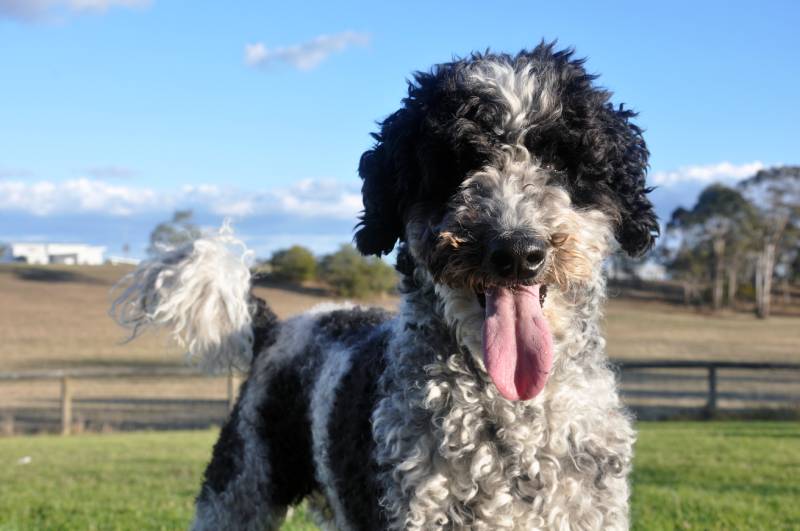
Owning a Schnoodle on a Budget
While it may not happen often, there is a chance that you could find a Schnoodle at a rescue or shelter. If this happens, you’ll save money on the initial cost of bringing your new best friend into your home. You can also order food, treats, and other supplies in bulk. Often, this will give you a discounted price. The key is to learn how to properly store your dog’s food so it stays fresh and doesn’t waste away.
When it comes to medical issues and emergencies, pet insurance is easily your best friend. While it may not pay for everything your dog experiences, it will help with many things the two of you may face.
Saving Money on Schnoodle Care
One of the easiest ways to save money on Schnoodle care is to learn how to do certain things yourself. You can watch videos to help you learn how to keep your Schnoodle’s coat well groomed and trimmed how you want it. You can also sign up for memberships and discounts offered by Chewy and other retailers that supply your Schnoodle’s monthly necessities.

Conclusion
Bringing one of these gorgeous dogs into your home can be expensive. Depending on where you find your new best friend, you can expect to pay anywhere from $50 to $2,000 or more for a Schnoodle. You should also expect to pay up to $500 per month to keep your pet happy, healthy, and living their best life. Luckily, there are ways to save money for pet owners on a budget. No matter your financial means, though, if you bring a Schnoodle into your home, make sure you’re prepared for everything that you may face.
Featured Image Credit: pen_ash, Pixabay
